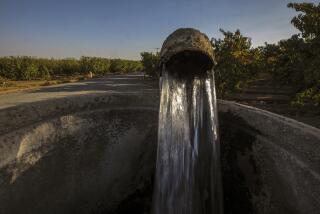Developing a Thirst for Better Planning : The water shortage shows why Arizona approach to growth may need to be examined
- Share via
For the first time in nearly a century, Southern California has no obvious answer to a basic question the region has faced down through its history: Is there enough water to sustain all the development and population growth the area wants?
Early in the century, Los Angeles provided the answer by going to the Owens Valley for water. Three decades later, working through the Metropolitan Water District, the region ventured out to the Colorado River for more supplies. And in 1960, MWD joined the State Water Project to ensure enough water, supposedly, until well into the 21st Century.
But the State Water Project is not now able to deliver what it promised. The region is wracked with the fourth year of drought. There are no more obvious big water holes out there. And the drought itself is causing people to ask whether Southern California can continue a pace of virtually unlimited growth without assurance of enough water to sustain it.
Citizen activist groups in the San Fernando Valley have questioned the wisdom and equity of Mayor Tom Bradley’s proposed drought-busting program of 10% mandatory water savings, which The Times supports. But they make interesting points. They claim the mayor’s plan failed to deal with the underlying problem: too much development. For example, they cited Bradley’s assent to the Porter Ranch project, which would gulp down an estimated 2 million gallons of water a day. A Bradley aide said, with reason, that that’s a separate issue. The drought cutbacks would be only temporary. Besides, the aide said, changes required of the Porter Ranch, such as installation of a dual pipe system to use reclaimed treated sewage, would save water.
Water agency planners contend that their job is to get the water, not to manage growth. But the cities that do have such authority are loath to curb development because they need growth to bring additional tax revenues into their treasuries. As a result, only a scattering of small communities in California have conditioned development on water availability in any manner. By contrast, in most of urban Arizona, any new project must have an assured 100-year supply of water before it can be approved.
Few officials are willing to say how much growth is enough; no single agency is empowered to make such decisions for the entire L.A. basin. But the water issue--which will not go away when the drought ends--may well force leaders to begin facing that challenge Arizona-like. And the sooner they start making those tough choices, the better.
More to Read
Sign up for Essential California
The most important California stories and recommendations in your inbox every morning.
You may occasionally receive promotional content from the Los Angeles Times.













